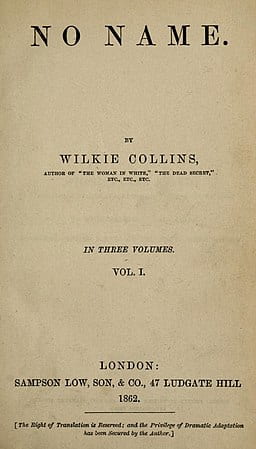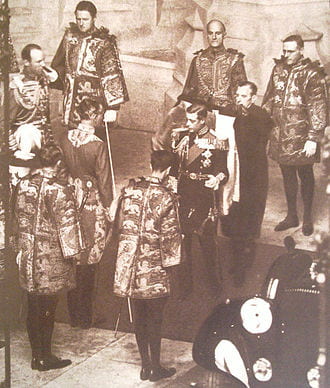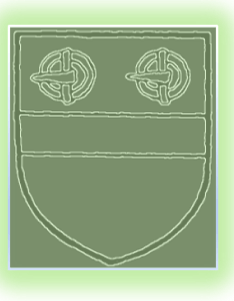I came across an interesting story whilst on one of my ‘bastardy’ trawls today – something in the Close Rolls for March 1459 which has things to say about bastardy but also about other things, including marriage and mental incapacity.[i] Read on if that sounds like your sort of thing …
By his own account (in English!), Edward Sely of Ditton,[ii] husbandman, had got himself into a bit of trouble. He had allowed himself to be drawn into some litigation, fomented by a London mercer, Rauf Marche. Rauf, using Edward’s name, had gone to law, to try and disinherit a relative of Edward’s, one Simon Sely, of London. Rauf had been putting forward the claim that the rightful heir to property once held by Laurence Sely of London, a claim to which passed, indirectly, to the late John Sely of Chiseldon (JS1), was Edward, rather than Simon, because, so he said, Edward’s father (JSA) rather than Simon’s father, John Sely of London (JS2), was the legitimate heir of JS1. This, however, was not trewe.
In Edward’s narrative, JS1 had had a rather eventful life. He had fled his original home after having killied a miller ‘by ‘infortunat case’, and lived as a labourer in Cranford, Middlesex. Perhaps concerned that the law would catch up with him, he had used different names during his time in Cranford, and was known as both ‘John Bartholomew’ and ‘John Sely’. He never felt safe enough to claim his rights in the family property either. He did have a family of his own, however, albeit not in the most straightforward way. He had two sons, both called John (thank you so much for that!) – with a woman called Dionise Cranford, sister of a squire. These sons (JSA and JSB) were ‘bastards’, since JS1 and Dionise were not married. They then did get married, and had a son, called (of course) John – this was JS2, eventually to be the father of Simon. So, under the rules about legitimacy and inheritance, JS2 and then Simon were the rightful heirs to JS1, rather than and JSA (and Edward) or JSB.
It is possible that JS2 never really knew about his claim to property formerly belonging to Laurence – the narrative tells of an occasion late in JS1’s life (when he was over 80) when he tried to get the help of JSA’s wife Christian (Edward’s mother) to encourage his ‘childerne’ to ‘laboure to have recovere’ of the ‘lyvelode’ (property) to which he was entitled in London and Bristol, and to get him in contact with JS2, who was his ‘rightful here’. Christian dutifully reported to JS2 what JS1 had said, and the father and son discussed it. JS1 laid upon JS2 the responsibility of suing to recover it, giving him all of the proof he had of his entitlement, and telling him where there was further evidence. He also told JS2 what he wanted to happen to the property, if he recovered it and then JS2 had no issue – he would prefer it to go to JSA and JSB than to ‘any other straunge persones’.
JS2 does seem to have made efforts to recover the property, but it is not clear what the outcome was. What seems to come out of Edward’s narrative, however, is that there were some tensions in the relationships between the three sons of JS1: JS2, JSA and JSB. JS2 needed money to get his lawsuit(s) going, and asked for the help of his ‘bastard’ brothers. JSA – despite his wife’s earlier co-operation with JS1 and JS2 – refused outright. He would neither give nor lend JS2 any money, despite the offer of a share in any winnings. JSB, however, was prepared to make a sacrifice to help out JS2 – he sold two of his plough-oxen and gave JS2 the money.
By 1457, JS2 seems to have died, leaving Simon as the potential heir. At some point before 1459, however, Rauf Marche had entered the picture, seeking out Edward and trying to find (or concoct) a claim on his behalf (searching in ‘frary books’ to sort out JS1’s children). He also had an accomplice/partner, one ‘John Squery late of London, gentleman’. As Edward told it, Rauf and Squery (we are not going with another ‘JS’…) badgered him on different occasions, using a ‘carrot and stick’ approach – he was entitled to property in and around London (nice) and since he didn’t sue to recover it, he was ‘accursed’ (a bit nasty). Rauf, somewhat in the manner of a dodgy PPI mis-selling recovery company – told Edward he couldn’t get the property without Rauf’s help. This, of course, would not come free – thus the deal which Edward suggests he was manoeuvred into: if the claim was successful, Rauf would keep the property until he got back his expenses. Edward claimed that he had not really understood it all – ‘for as moche as he is a lewde man and not lettered’.
All of this does make Edward sound a bit ‘lewde and not lettered’, or at least unwise, since he is, essentially, admitting to having taken part in a dishonest agreement to try and disinherit his relative and the rightful heir to the property in question. Would there be mercy for him? Would there be come-uppance for Rauf? Would Simon get his inheritance? Would anyone remember poor, virtuous and self-sacrificing JSB (now, apparently, dead)? As so often, it’s a big ‘I don’t know’ on all of that. The entry is, however, still interesting in numerous respects, several of which come out in the discussion above, and one which I have kept as a bonus, because it is very interesting, though I am not quite sure what to make of it, and also because it is not entirely necessary to the tale Edward told about property and dubious litigation.
- JS1’s lengthy period as a fugitive
We could see this as an indication of the lack of efficacy of the machinery of ‘criminal justice’ at this point – since JS1 clealy lived for decades without being brought to trial for the death of the miller. However, another view is possible – note the lengths he went to, to avoid being tried: distance, name change, keeping his identity and family connections secret from his own sons until he was close to death. All of that suggests a degree of fear that he might be found.
- Property matters[iii]
The reason I looked at this was the ‘bastardy’ and inheritance angle – and that is relatively straightforward. The entry confirms contemporary lay understanding that subsequent marriage did not legitimate pre-marital children as far as inheritance to land was concerned. There is interesting material on property, though, in the interactions of JS1 and his family, and Edward and Rauf with regard to the recovery of the property. I note the argument based on a duty to try and recover family property (and the ‘accursed’ position of the person who does not do this). That strikes me as an interesting point of view to consider. Was that just flannel – a way of dressing up self interest? Or was it a real feeling that this was something owed to one’s lineage?
- Marriage and mental incapacity
This is the bit I held back, though it comes up quite early in the narrative. Edward’s story about his father’s early days living in Cranford has something more to say about the relationship between JS1 and Dionise, the squire’s sister. According to the story, after the (‘illegitimate’) birth of JSA and JSB, Dionise’s brother, and other people made JS1 marry her. They were, apparently unhappy at the irregular state of this union – ‘their imperfite lyvyng’. JS1 was not at all keen – he was ‘right loth’ to marry Dionise. Why? Because she had some sort of mental incapacity. In the now-jarring language of the times she was (so it is said here) ‘an idiotte’. There is a tiny bit of additional information about this judgment, though, to be honest, it is not exactly … informative (to me at least). Dionise ‘knewe no worldly reason in so moche that she wolde calle a noble a nubble’. That does seem rather a problem with pronunciation than anything else, but I may well be missing something. Is it perhaps a vague echo of some of the older medieval tests of capacity which involve basic financial acuity – since a ‘noble’ was a unit of currency – or is the problem with a lack of respect for the entitled? I am imagining various mildly racy meanings for ‘nubble’ but haven’t found anything to back them up … Or is that some sort of proverbial expression which would convey a lot more to contemporaries? I do hope somebody better-informed will clear that up for me one day.
Finally, Edward’s choice to include this material about Dionise (his grandmother) is interesting – why would he do that? Perhaps the most obvious implication is that he was trying to justify JS1’s tardiness in getting married to Dionise. It doesn’t really make him look too good, though, to suggest he thought Dionise was fine for sex but not for marriage, does it?
GS
7/8/2021
[i] CCR 1454-61, 355-7. There is one other easily accesible (from home – general pandemic issues and also currently under specific order to stay at home as a close contact of an infected person … with that infected person … viral sword of Damocles or what?) record which corroborates parts of this story: it’s from 1457.
[ii] Dinton, Bucks?
[iii] (I am using ‘property’ like a modern lawyer – note that that word is not used once in the entry itself – which is quite interesting in itself, but concepts of property in the medieval common law is probably a bit too big a topic for a quick blog post).
Image – tree, family, complexity and stuff … Photo by Lucas van Oort on Unsplash



